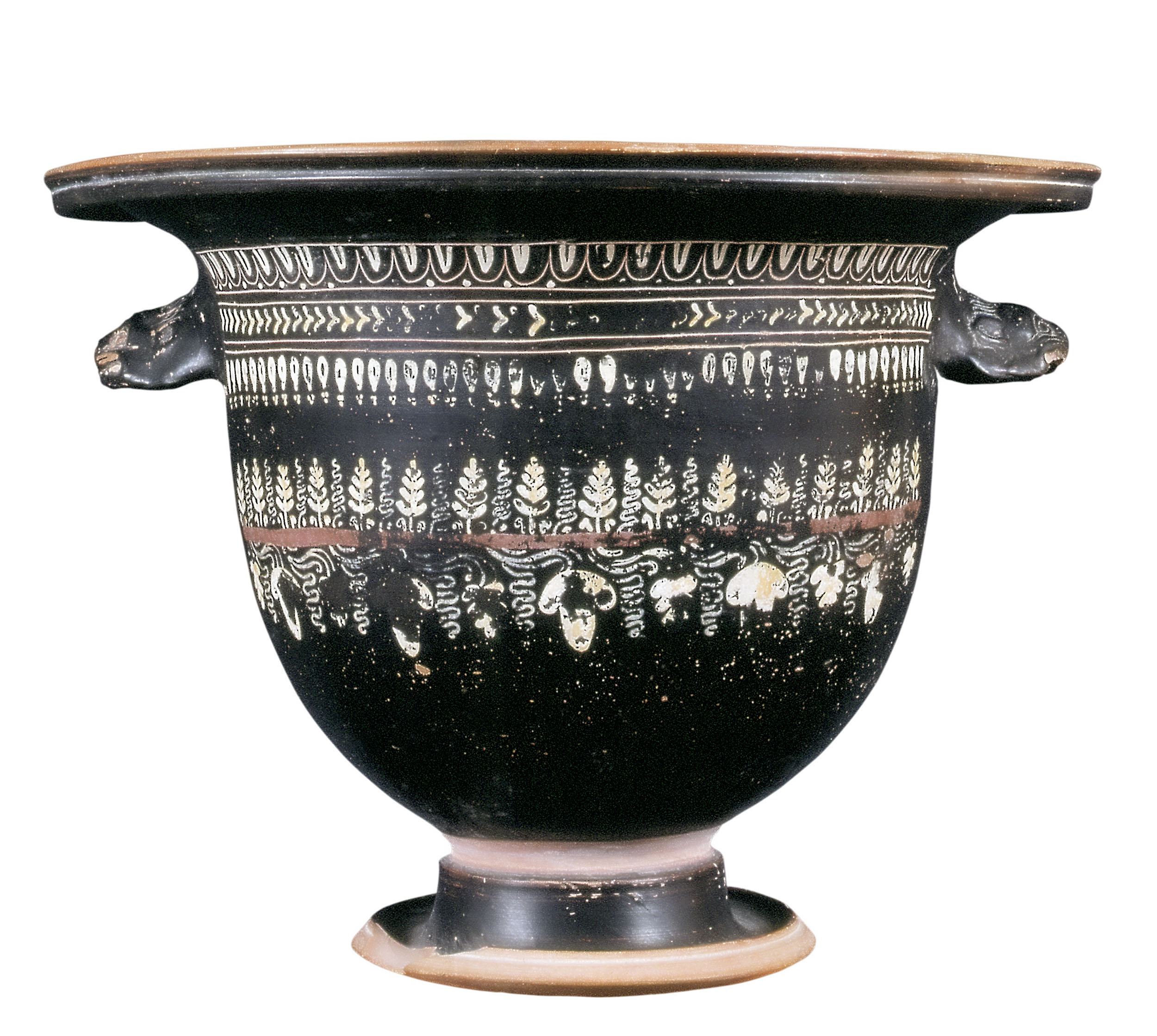

Bell crater, Gnathian type
The vase is decorated on one side only in the characteristic style of Gnathia ware. Floral and linear designs are rendered in applied white color. On the belly, beneath a wide purple band vine leaves alternate with tendrils and schematized bunches of grapes. Above is a series of leaves and tendrils. On the neck, double incised lines separate three zones with linear decoration. A thin layer of yellow color, for the most part worn off, remains in places on the applied white.
The term “Gnathian” is used for the South Italian counterpart of the Mainland Greek style known as “West Slope” ware. It is characterized by its primarily floral decoration in dilute clay or white color on a black ground. The term is conventional, derived from the finding of pottery of this style for the first time in the city Egnazia, modern Gnathia, in Apulia. The production of this pottery began shortly before the middle of the 4th century (370-360 BC) in Apulia. The main center was Taranto (Tarentum), but it subsequently was produced by all the pottery workshops of South Italy and Sicily. “Gnathian” pottery, which ceased to be produced during the final decades of the 3rd century BC, was widely distributed throughout the markets of the West, the Black Sea, North Africa and the Greek region.
PUBLICATION
Eleftheratou S. 2006. Cat. no. 92, in Choremi-Spetsieri Α. – Zarkadas Α. (eds), The Paul and Alexandra Canellopoulos Museum. Ancient Art, Athens, 152-153.
